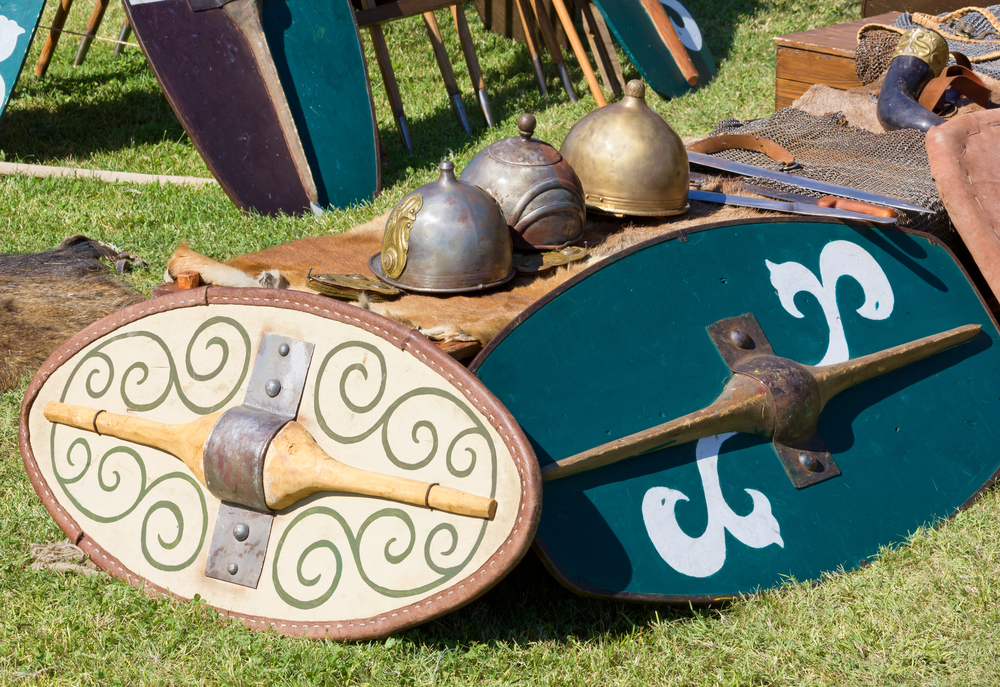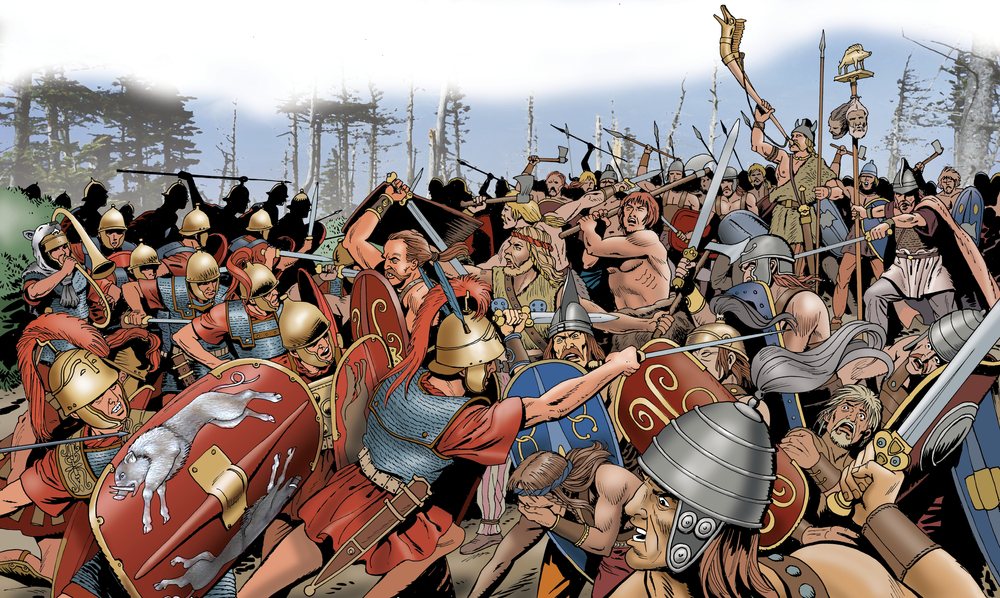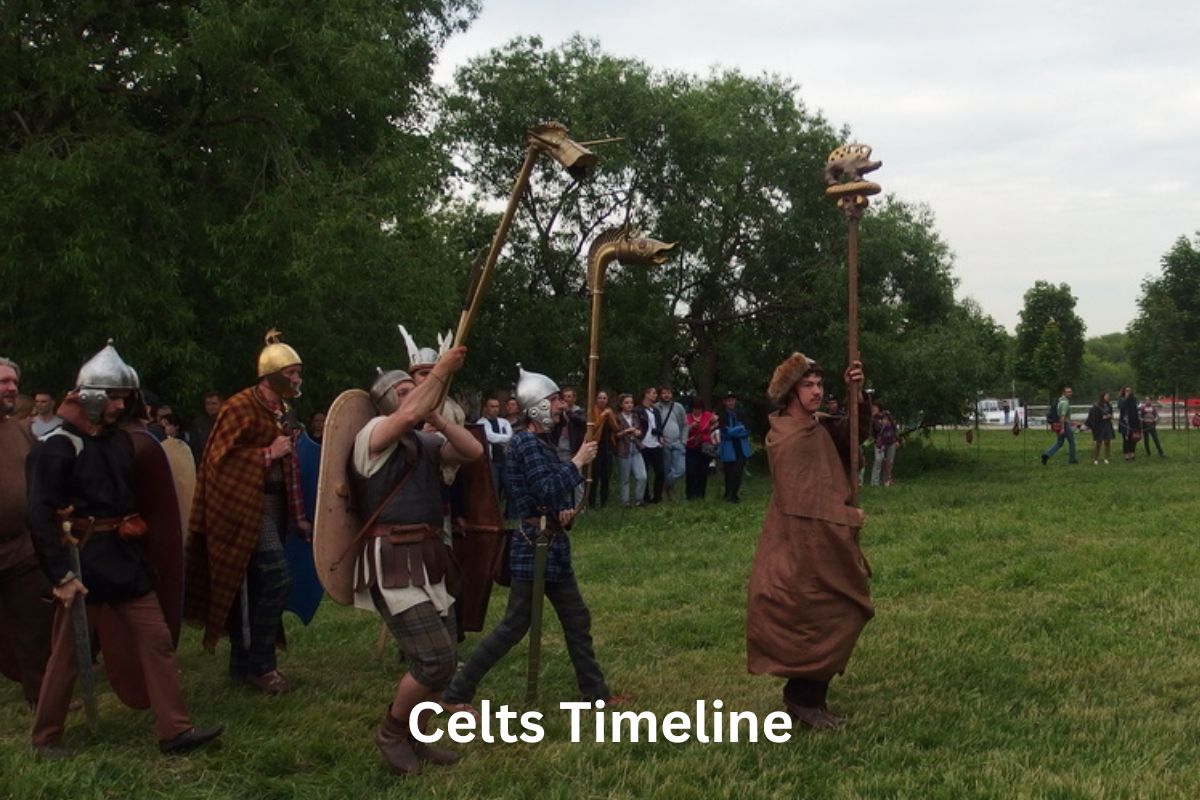Celtic history is a rich tapestry of ancient cultures and societies that emerged in Europe during the Bronze and Iron Ages. The Celts, a group of Indo-European-speaking peoples, left a profound impact on the continent’s history.
Their story is marked by distinct cultural achievements, migrations, interactions with other civilizations, and periods of resistance and adaptation.
Celtic history spans thousands of years and encompasses regions as diverse as Ireland, Scotland, Wales, Brittany (in France), and parts of Spain and Central Europe.
This history is a testament to the enduring legacy of Celtic languages, art, and traditions that continue to influence the modern world.
| Period | Key Events and Developments |
|---|---|
| Bronze Age (c. 2500-800 BCE) | – Emergence of Celtic-speaking people. |
| – Development of bronze tools and weapons. | |
| – Hallstatt culture in Central Europe. | |
| Iron Age (c. 800 BCE-1st century CE) | – Celts become prominent in Europe. |
| – Hallstatt and La Tène cultures. | |
| – Expansion of Celtic tribes into various regions. | |
| 4th-1st centuries BCE | – Julius Caesar’s campaigns in Gaul. |
| – Roman conquest of Celtic territories. | |
| – Interaction of Celtic and Roman cultures. | |
| 1st-5th centuries CE | – Resistance movements like the Boudiccan Revolt. |
| – Gradual Romanization of Celtic regions. | |
| – Rise of early Christian communities. | |
| 5th-10th centuries CE | – Decline of Roman Empire, withdrawal of forces. |
| – Invasions by Germanic tribes and Norse Vikings. | |
| – Emergence of Insular Celtic languages. | |
| Medieval Period (6th-16th centuries CE) | – Rise of Celtic kingdoms and states. |
| – Viking and Norman invasions. | |
| – Spread of Christianity. | |
| 16th-18th centuries CE | – English and Scottish influence in Ireland and Wales. |
| – Union of the Crowns and Acts of Union. | |
| – Formation of the Kingdom of Great Britain. | |
| 19th-20th centuries CE | – Celtic Revival promoting culture and nationalism. |
| – Irish and Welsh nationalist movements. | |
| – Home Rule debates and Irish independence. | |
| – Celtic language revival and cultural preservation. | |
| Modern Era (20th century-present) | – Continued efforts to promote Celtic languages and culture. |
| – Devolved governments in Scotland, Wales, and Northern Ireland. | |
| – Ongoing debates about autonomy and nationalism. |
Timeline of Celtic History
Bronze Age (c. 2500-800 BCE):
Emergence of Celtic-speaking people: During the Bronze Age, various Celtic-speaking groups began to emerge in Europe.
They were characterized by a shared linguistic and cultural heritage. The precise origins of the Celts are still debated among historians, but they likely had their roots in the central and western regions of Europe.
Also Read: Facts About the Celts
Development of bronze tools and weapons: The Bronze Age marked a significant advancement in metallurgy, with the Celts and other societies in Europe mastering the art of bronze production. Bronze tools and weapons greatly improved their agricultural and military capabilities.

Iron Age (c. 800 BCE-1st century CE):
Celts become prominent in Europe: The Iron Age witnessed the Celts rising to prominence in Europe. They developed a distinct Iron Age culture characterized by intricate art, skilled metalwork, and a social structure composed of various tribes and chieftaincies. Their dominance extended across much of central and western Europe.
Also Read:
Hallstatt and La Tène cultures: The Iron Age Celts can be divided into two major cultural phases. The Hallstatt culture, which began around 800 BCE, was named after a salt mining site in Austria. The La Tène culture, which followed, was marked by significant artistic and technological advancements and extended across a broader geographic area.
Expansion of Celtic tribes: Celtic tribes expanded and migrated to various regions during this period. They moved westward into the Iberian Peninsula (present-day Spain and Portugal), north into the British Isles, and south into Italy, among other areas. This expansion brought them into contact with other cultures, leading to cultural exchanges and sometimes conflicts.
4th-1st centuries BCE:
Julius Caesar’s campaigns in Gaul: In the mid-1st century BCE, the Roman general Julius Caesar launched a series of military campaigns against Celtic Gaul (modern-day France and parts of neighboring regions).
These campaigns, known as the Gallic Wars (58-50 BCE), resulted in the Roman conquest of Gaul and marked a significant turning point in Celtic history.
Roman conquest of Celtic territories: As a result of the Gallic Wars, the Romans established control over a substantial portion of Celtic territory. This marked the beginning of Roman influence in Celtic regions and led to the eventual Romanization of these areas.
Interaction of Celtic and Roman cultures: The Roman conquest brought the Celts into contact with Roman culture and technology.
While the Celts retained elements of their culture, the Roman presence had a lasting impact, including the spread of the Latin language and Roman administrative practices.
This period of interaction laid the groundwork for the later development of Celtic-Roman hybrid cultures in areas like Gaul.
1st-5th centuries CE:
Resistance movements like the Boudiccan Revolt: In the early 1st century CE, Celtic territories within the Roman Empire experienced various revolts and uprisings against Roman rule.
One notable example is the Boudiccan Revolt in 60/61 CE, led by Queen Boudicca of the Iceni in Britain. This revolt aimed to challenge Roman domination but ultimately failed.
Gradual Romanization of Celtic regions: Despite resistance, Roman culture and administration continued to influence Celtic regions. Romanization involved the spread of Latin language, Roman architecture, and governance systems. It contributed to a gradual transformation of Celtic societies.
Rise of early Christian communities: During the 4th and 5th centuries, Christianity began to spread in Celtic regions. Missionaries like St. Patrick played a crucial role in converting the Celts to Christianity. This marked the beginning of a strong Christian tradition in areas like Ireland, Scotland, and Wales.

5th-10th centuries CE:
Decline of the Roman Empire, withdrawal of forces: In the 5th century CE, the Roman Empire began to decline, and its forces withdrew from many Celtic territories, leaving a power vacuum. This withdrawal allowed for the emergence of independent Celtic kingdoms and tribal territories.
Invasions by Germanic tribes and Norse Vikings: Celtic regions faced invasions by Germanic tribes, such as the Angles, Saxons, and Jutes in Britain, and Norse Vikings in Ireland, Scotland, and Wales. These invasions led to conflicts and the establishment of new political entities in Celtic lands.
Emergence of Insular Celtic languages: During this period, the Insular Celtic languages, including Old Irish, Old Welsh, and Old Breton, developed and evolved. These languages had common origins but diverged into distinct linguistic branches, forming the basis for modern Celtic languages.
Medieval Period (6th-16th centuries CE):
Rise of Celtic kingdoms and states: Despite challenges from invaders and settlers, several Celtic kingdoms and states emerged during the medieval period.
Notable examples include the Kingdom of Dal Riata in Scotland and the Kingdom of Gwynedd in Wales. These entities played significant roles in shaping the history of their respective regions.
Viking and Norman invasions: Viking raids and settlements continued to impact Celtic lands during this period. Additionally, the Norman Conquest of England in 1066 had implications for Wales and Ireland, as Norman rulers extended their influence.
Spread of Christianity: The medieval period saw the consolidation of Christianity in Celtic regions. Monastic centers, such as Iona in Scotland and Clonmacnoise in Ireland, became important centers of learning and culture. The spread of Christianity also had a unifying effect on Celtic societies.
16th-18th centuries CE:
English and Scottish influence in Ireland and Wales: During this period, English and Scottish influence expanded in Ireland and Wales. English and Scottish settlers arrived in these regions, leading to demographic changes and cultural interactions. This influence had lasting political and social implications.
Union of the Crowns and Acts of Union: In 1603, the Union of the Crowns occurred when James VI of Scotland also became James I of England. This united the crowns of England and Scotland under one monarch but did not merge the two kingdoms. Later, in 1707, the Acts of Union formalized the political union of England and Scotland into the Kingdom of Great Britain.
Formation of the Kingdom of Great Britain: The Acts of Union in 1707 and the subsequent Act of Union with Ireland in 1801 led to the creation of the Kingdom of Great Britain, comprising England, Scotland, and Ireland (later Northern Ireland). Wales had been annexed by England centuries earlier.
19th-20th centuries CE:
Celtic Revival promoting culture and nationalism: The 19th century saw the emergence of the Celtic Revival, a cultural and political movement aimed at preserving and celebrating Celtic languages, arts, and traditions. Figures like Lady Augusta Gregory, W.B. Yeats, and Douglas Hyde played significant roles in this revival.
Irish and Welsh nationalist movements: Ireland and Wales experienced nationalist movements seeking greater autonomy or independence from the United Kingdom. In Ireland, this culminated in the Easter Rising of 1916, which eventually led to the establishment of the Irish Free State in 1922. In Wales, there were calls for Home Rule and the preservation of Welsh identity.
Home Rule debates and Irish independence: The late 19th and early 20th centuries were marked by intense debates over Home Rule for Ireland. After a series of political and social struggles, Ireland gained independence from the United Kingdom in 1922, although Northern Ireland remained part of the UK.
Celtic language revival and cultural preservation: Efforts to revive Celtic languages gained momentum during this period. Organizations and institutions were established to promote the use of languages like Irish, Welsh, and Scottish Gaelic. Cultural festivals, literature, and art played vital roles in preserving Celtic heritage.
Modern Era (20th century-present):
Continued efforts to promote Celtic languages and culture: Celtic language revival efforts continue into the 21st century. While some languages, like Irish and Welsh, have made significant progress in terms of revitalization, others, such as Scottish Gaelic and Breton, still face challenges.
Devolved governments in Scotland, Wales, and Northern Ireland: The late 20th century and early 21st century saw the establishment of devolved governments in Scotland, Wales, and Northern Ireland. These governments have varying degrees of legislative and administrative powers, contributing to greater self-governance.
Ongoing debates about autonomy and nationalism: Political debates about the level of autonomy and nationalism persist in Celtic regions. Issues like Scottish independence, the status of Welsh and Irish languages, and the resolution of conflicts in Northern Ireland remain topics of discussion and contention.
